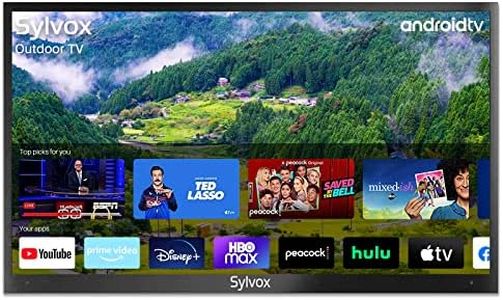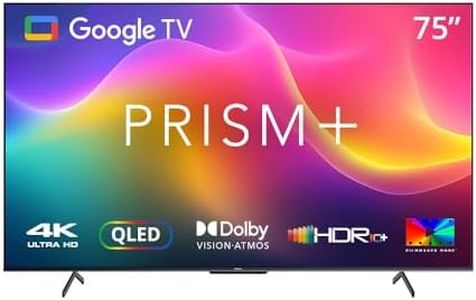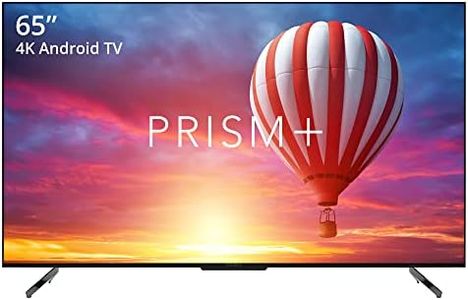We Use CookiesWe use cookies to enhance the security, performance,
functionality and for analytical and promotional activities. By continuing to browse this site you
are agreeing to our privacy policy
4 Best Outdoor TVs
From leading brands and best sellers available on the web.By clicking on a link to a third party's website, log data is shared with that third party.
Buying Guide for the Best Outdoor TVs
When choosing an outdoor TV, it's important to remember that these are specially designed for use outside where they face challenges like sunlight, changes in temperature, humidity, dust, and sometimes rain. You’ll want a TV that can handle these elements while still delivering a clear, enjoyable picture. Outdoor TVs tend to cost more than their indoor counterparts, but their durability and features are tailored to outdoor living spaces, such as patios, decks, or rooftops. Focus on matching the model’s specifications to your specific outdoor conditions and usage.Weather ResistanceWeather resistance refers to how well the TV can handle rain, humidity, dust, and temperature changes. This is usually measured by an IP (Ingress Protection) rating. A higher number means better protection—look for at least IP55 if the TV will be fully exposed, while covered patios might get by with a lower rating. Consider your climate and whether your TV will be sheltered or out in the open, as this will guide how rugged it needs to be.
BrightnessBrightness, measured in nits, determines how well the screen can be seen in sunlight. Indoor TVs are typically 200-400 nits, but outdoor TVs range from 500 to over 2000 nits. For full shade, lower brightness (around 500-700 nits) is usually fine. Partially shaded areas need moderate brightness (700-1000 nits), while full sun areas require the brightest screens (over 1500 nits). Pick a brightness level based on where and when you'll be watching most often.
Screen FinishThe screen finish can be either glossy or anti-glare (matte). Glossy screens have richer colors but are more reflective, which can be a problem outdoors. Anti-glare finishes reduce reflections and make the screen easier to see on sunny days. If your setup is very bright or prone to a lot of light, an anti-glare screen is typically the best option.
Operating Temperature RangeThis tells you the temperatures within which your outdoor TV will work safely. Some TVs are built for mild climates, while others can survive both freezing winters and hot summers. Check the manufacturer’s recommended range against the extremes in your area, and pick a model that matches or exceeds those numbers for trouble-free viewing year-round.
SizeOutdoor TVs come in various sizes, generally ranging from 32 to 75 inches or more. The right size depends on your viewing distance and the space where you’re installing it. If you’ll be sitting far away or want a cinematic experience, a bigger screen can be better. Smaller spaces or closer seating might warrant a more modest size. Measure your area before shopping and consider mounting options as well.
Smart FeaturesSmart features mean the TV can connect to Wi-Fi and deliver streaming apps without extra devices. Some outdoor TVs include these features, others focus just on weatherproofing and need a separate streaming box. Decide if you want a TV with built-in streaming or if you're comfortable using an external device in a protected enclosure.
Sound System CompatibilityOutdoor TVs often have basic built-in speakers, but outdoor conditions can make these hard to hear. Consider a TV that allows connection to external sound systems, like weatherproof soundbars or Bluetooth speakers. Think about how loud your environment is and if you plan to use the TV during gatherings—matching the sound output with your space will lead to a much better experience.



